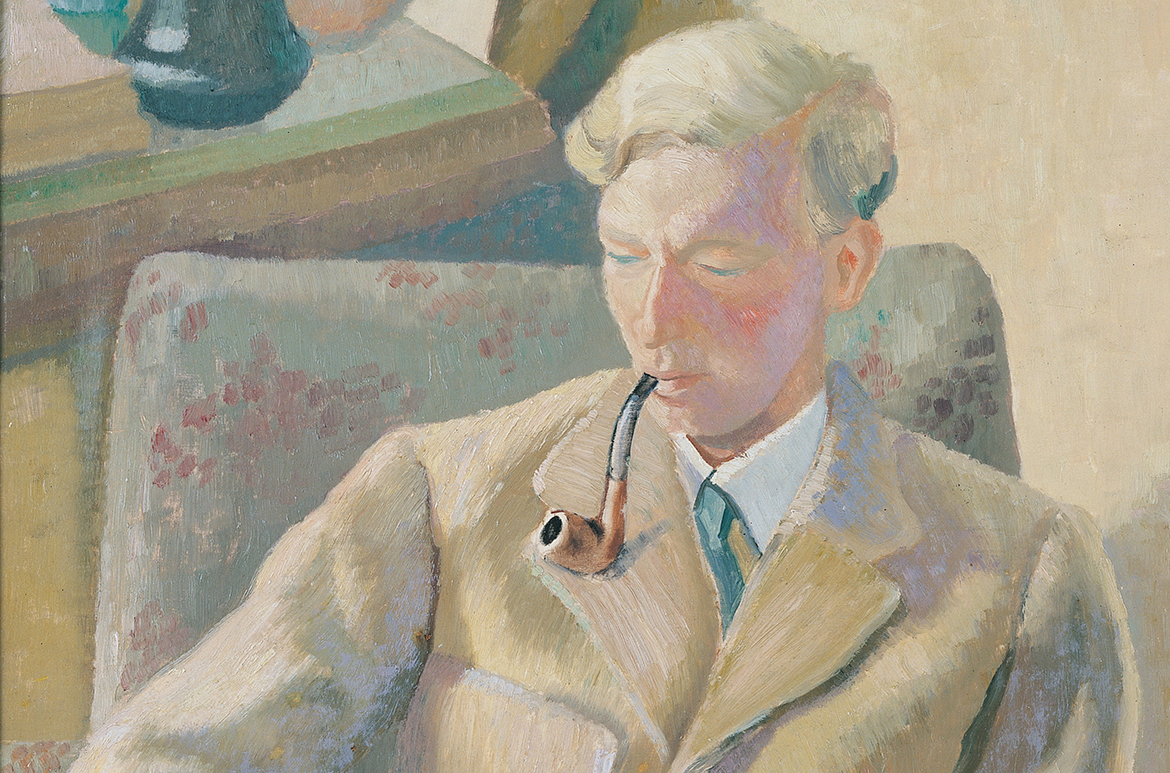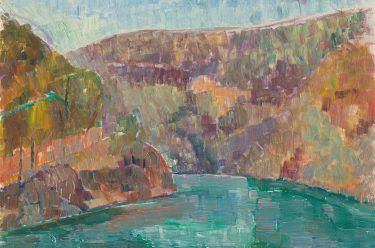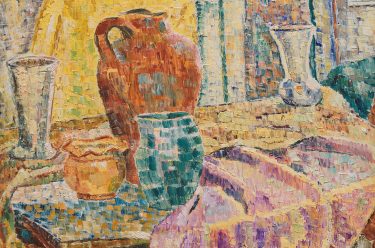Embracing new visual vocabularies to better express their distinct viewpoints, many notable Australian artists broke from tradition in the 1920s and 1930s and turned to Modernism. At this time, these artists immersed themselves in geometric concepts of space and volume, rhythm and repetition, as well as illusion and flatness.
On display within the Queensland Art Gallery’s Australian Art Collection, Josephine Ulrick and Win Schubert Galleries (10-13) are works by Grace Cossington Smith, Roland Wakelin, Rah Fizelle, Ralph Balson, Grace Crowley and Godfrey Miller.
Grace Cossington Smith (20 April 1892–1984) is recognised for her central role in the development of modern art in Australia — she was ambitious and steadfast in her pursuit of Modernism, her subject matter the familiar surroundings around her home in Sydney.
Throughout Cossington Smith’s early work portraits and figure studies were important, even though it’s landscapes and interiors which dominate. Even so, Cossington Smith regarded portraiture as an aspect of form.
‘All form — landscape, interiors, still life, flowers, animals, people — has an inarticulate grace and beauty; painting to me is expressing this form in colour, colour vibrant with light — but containing this other, silent quality which is unconscious and belongs to all things created.’
Grace Cossington Smith ‘(Portrait of a man)’ c.1943
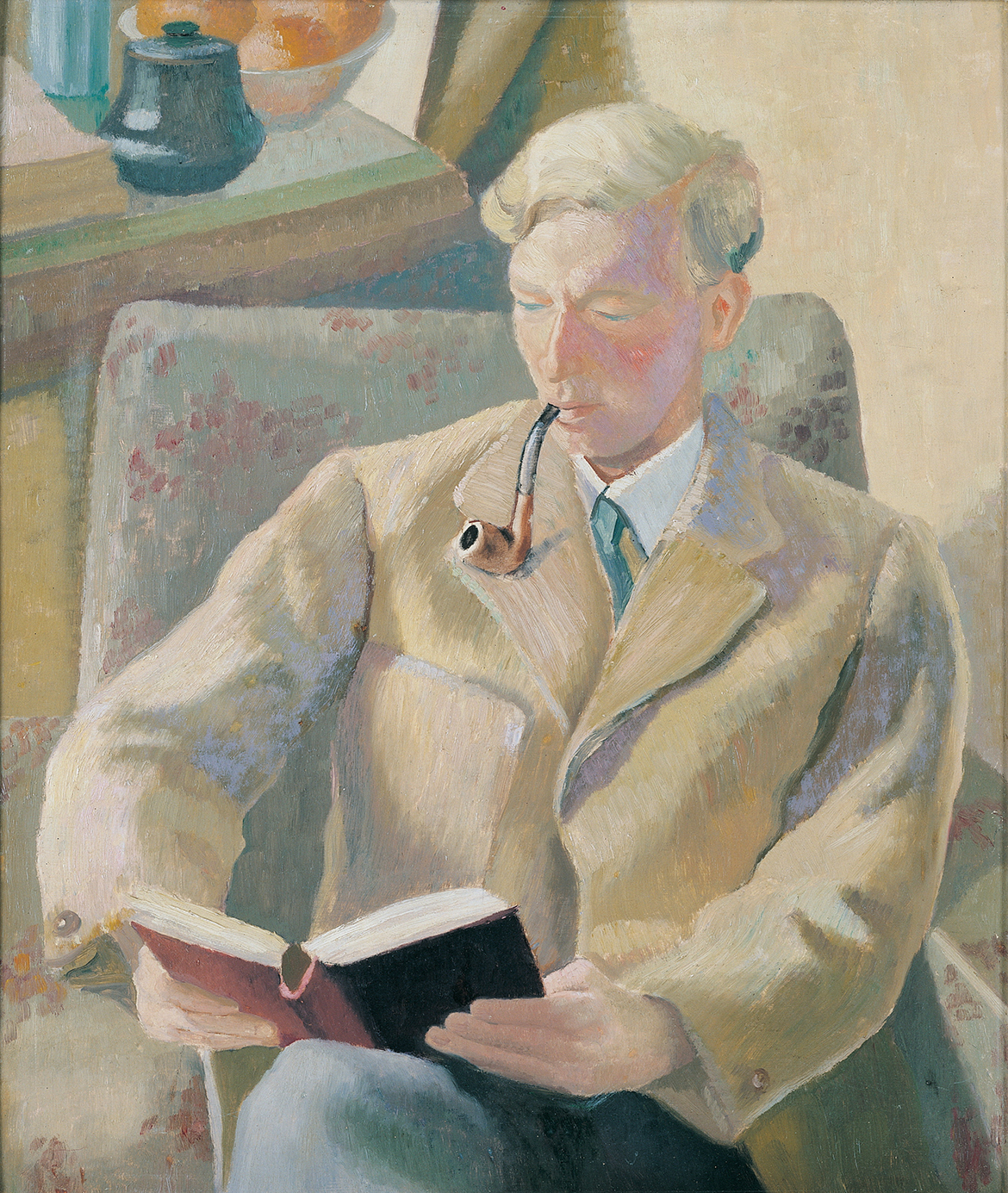
The artist has captured in Portrait of a man c.1943 (Illustrated) this silent quality she mentions — an essence of stillness. The sitter has an air of quiet charm and sophistication, not engaging with the viewer at all but settled comfortably in his chair with a good book.
Who is this man? The identity of the sitter is uncertain: perhaps fellow artist Roland Wakelin — known to have read widely and smoked a pipe — they studied and painted together and were close friends. Can you see a resemblance?
Portrait of Roland Wakelin
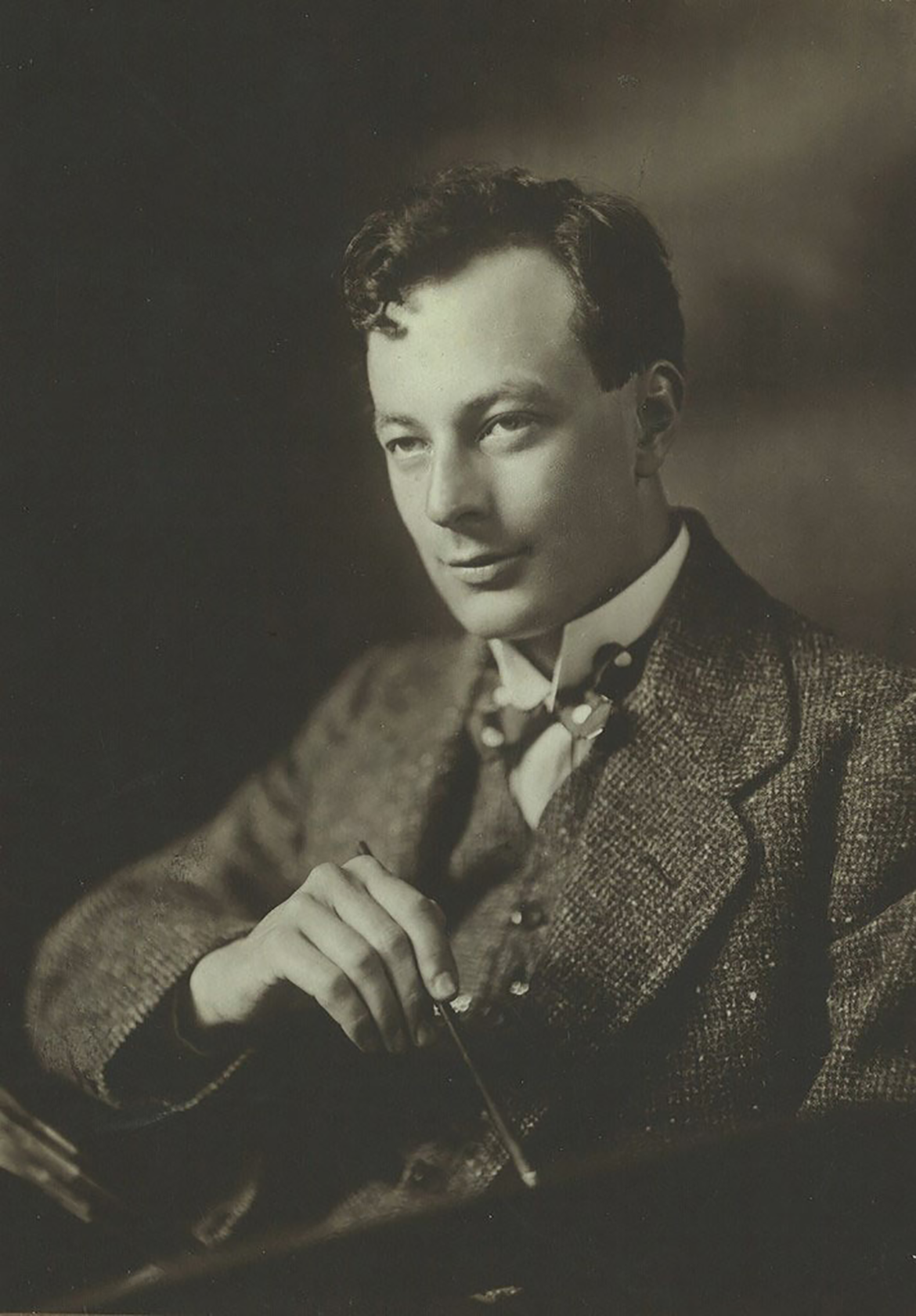
#QAGOMA
